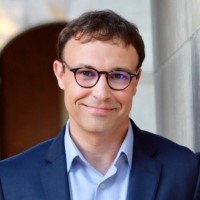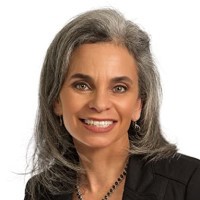In a world grappling with the challenges of divisive elections, international conflicts, a climate crisis, and a values crisis in leaders and citizens, we are continually reminded that hope is essential.
On November 6, the Ian O. Ihnatowycz Institute for Leadership hosted its 8th annual Character Leadership Conference, which centered around the apt theme, “Cultivating Hope for a Flourishing World.”
Related to this story
Through the lens of character, over 100 leaders in the private, public, and non-profit sectors came together virtually from across the globe to explore how to cultivate hope, foster mutual respect, and build connections that enable flourishing and excellence.
“It is our shared responsibility to cultivate hope within ourselves, our families, communities, organizations, and our societies,” said Dusya Vera, PhD ’02, Executive Director of Ihnatowycz Leadership, during her opening remarks. “Hope is a powerful force anchored in our character that enables us to envision a better future, even amid difficulties.”
The event included two keynote addresses by globally renowned thought leaders Adam Kahane and Wendy Smith, a fireside chat with prominent educator and scholar in the character education space Michael Lamb, and three workshops led by Ihnatowycz Leadership’s character academics and practitioners Mary Crossan and Corey Crossan; Lucas Monzani, Seemantini Pathak and Sonja Bruschetto; and Travis Lethbridge and Michael Bain.
Throughout the workshops, participants explored the role of character champions to bridge the gap between knowing and practicing character development, learned strategies to initiate character evolution within their teams, and examined how curiosity and perspective-taking can reduce conflict and enhance team cohesion. They engaged in interactive exercises and group discussions to apply these character principles to foster well-being and trust in their organizations.
Collaborating with the enemy, reconsidered
 Adam Kahane, author and Director of Reos Partners, a social impact organization focused on bringing change to complex challenges, kicked off the day as the opening keynote. Kahane shared insights from his extensive experience in conflict resolution, highlighting his work in South Africa and Colombia, where he facilitated collaboration among deeply divided groups. “The challenge of collaboration is to work in this large grey area between the people who are our close friends and those we view as enemies,” said Kahane.
Adam Kahane, author and Director of Reos Partners, a social impact organization focused on bringing change to complex challenges, kicked off the day as the opening keynote. Kahane shared insights from his extensive experience in conflict resolution, highlighting his work in South Africa and Colombia, where he facilitated collaboration among deeply divided groups. “The challenge of collaboration is to work in this large grey area between the people who are our close friends and those we view as enemies,” said Kahane.
He emphasized the importance of working with people we may disagree with or even distrust to drive meaningful change, presenting four possible responses to challenging situations: forcing, adapting, exiting, and collaborating. “Leadership is about creating a domain in which human beings continually deepen their understandings of reality and become more capable of participating in the unfolding of the world. Ultimately, leadership is about creating new realities.”
Hope is a virtue
 During a fireside chat led by Dusya Vera, Michael Lamb, Executive Director of the Program for Leadership and Character, Wake Forest University and author, discussed the importance of character education in higher education. His research focuses on the ethics of citizenship and the role of virtues in public life.
During a fireside chat led by Dusya Vera, Michael Lamb, Executive Director of the Program for Leadership and Character, Wake Forest University and author, discussed the importance of character education in higher education. His research focuses on the ethics of citizenship and the role of virtues in public life.
Lamb defined hope as a realistic pursuit of future good, one that requires practice to avoid falling into despair and presumption. He elaborated that hope can be an attitude, an emotion, or even a virtue.
“If hope is a virtue, it means that it must be acquired over time through intentional practice,” said Lamb. “Think about hope not just as a temporary feeling that's fleeting or that's maybe sort of futile, but actually a disposition we have to cultivate and practice.”
Paradox & the Power of AND
 Management thought leader and award-winning organizational psychologist Wendy Smith closed out the day with an interactive discussion around the value of embracing tensions in leadership and organizations. An expert on paradox and "both/and thinking," Smith explored the nature of either/or thinking and why this approach can be "limited at best and detrimental at worst.”
Management thought leader and award-winning organizational psychologist Wendy Smith closed out the day with an interactive discussion around the value of embracing tensions in leadership and organizations. An expert on paradox and "both/and thinking," Smith explored the nature of either/or thinking and why this approach can be "limited at best and detrimental at worst.”
Drawing on examples like IBM's adaptability and the suffragist movement's internal conflicts, Smith argued that constructive engagement with tension is key to thriving in complex environments.
“Our lives are full of tensions, competing demands, opposing pressures, opposing political positions, and opposing ideas. We tend to think of tensions as a bad word. I want us to rephrase that and lean into the possibility of tensions as enabling—enabling possibilities and enabling us to be more creative.”



